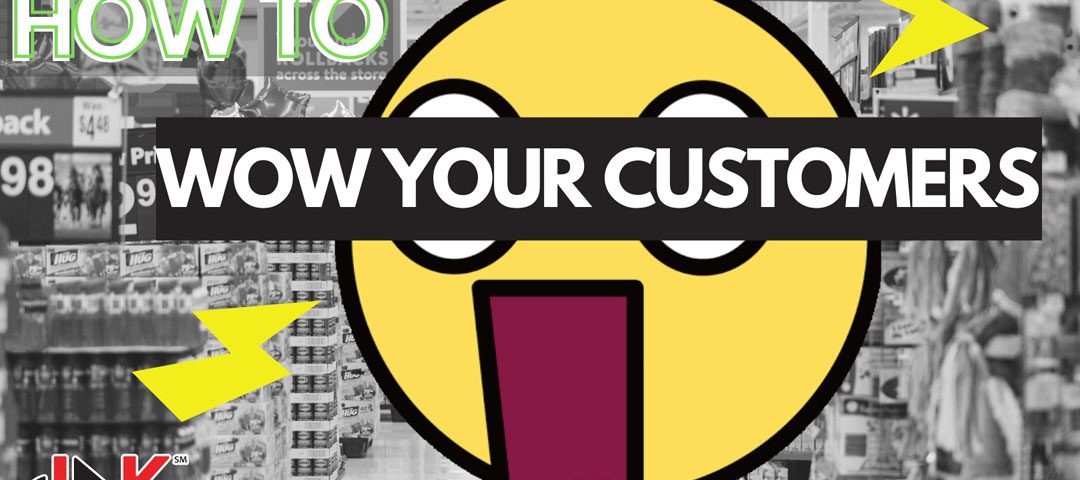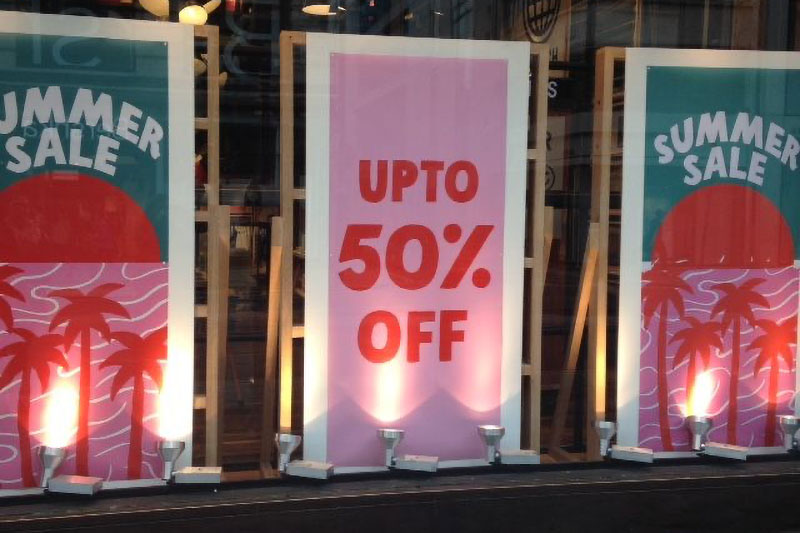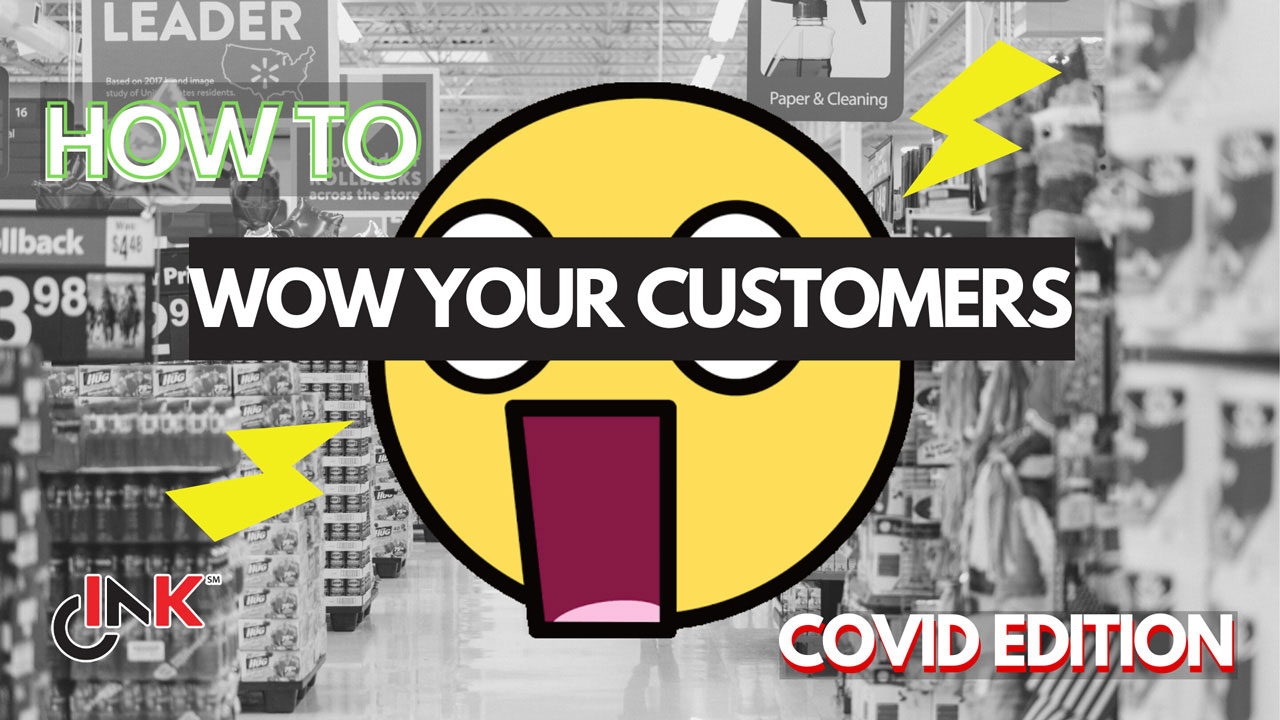
To keep the relationships between brands and consumers aflame, marketers locate the most effective and engaging ways for the conversation to happen.
Digital marketing emerged through the years to help marketers rethink their approach to the conversation, but the recent pandemic has scrapped all slow and deliberate planning and instead forced a gold rush into the digital space.
It is no longer part of a strategy to digitize for the future – for many businesses, a primarily digital strategy now becomes imperative for survival.
But this is not the post-apocalypse.
The streets aren’t emptying out anytime soon.
Stores haven’t all disappeared and physical retail is still very much ripe with new opportunities.
It’s simply that the terms of engagement have been rewritten to prioritize hygiene and safety in retail.
And so we deal with the reality of hand sanitizers, contact tracing scans, masking needs, closed changing rooms, shortened hours, temperature checks, and social distancing.
People are shopping differently.
What needs to happen, and is indeed happening, then, is for retail spaces to be redesigned to capture the new opportunities present under these new terms of engagement, both amidst COVID-19 and once everyone can safely go out without their masks (whenever that may be).
What does this mean for Point-of-Sale Materials?
With protocols and safety measures in place, the effectiveness of conventional point of sale materials (POSM) is now called into question.
For those who are unsure, POSMs are promotional materials placed within stores to grab the attention of customers who are considering or already preparing to make purchases.
They are placed at checkout lines and strategic parts of the store, designed to sway or spur in-the-moment decisions around purchases.
In a conventional sense, the design and placement of POSMs can be altered to suit the needs of a pandemic-driven society.
In Malaysia, supermarket entrances with long queues from in-store customer limits become an opportunity for promotional materials.
Likewise, standees with contact tracing (MySejahtera) scanning codes can be spaces for grabbing attention, and the same for checkout counters with e-wallet QR codes.
But that’s merely a matter of POSM placement, a different configuration of the same old rules.
The real opportunities for change in POSM are beyond that. Executed well, they can help brands pack a ‘wow’ punch or do more than just sell customers on impulse buying.
They can elevate the retail experience for people and challenge brands to creatively spark interactions with customers by (i) addressing relevant problems (ii) empowering customers, and (iii) providing unique retail experiences.
How can ingenuity in POSM change the game?
1. Design that solves customer problems
A fundamental posture of marketing engagement should be maintained even when using fresher ways of interacting with customers. Marketers need their selling to carry the substance of relevance and value.
Doing so means designing POSMs that solve problems. Not just any old problem, but what present nagging issue can brands solve for customers who are out shopping?
With protocols around retail hygiene, there are many options.
Standees with no-touch hand sanitizers are becoming par for the course in retail settings.
Where the sanitizer is, place your POSM to come face-to-face with customers.
For the germ-conscious, the fact that COVID-19 can live on phone surfaces for up to a month can be a source of paranoia.
Hence Finnish health company Terveystalo and creative agency TBWA teamed up to create retail billboards that clean devices with UVC light in 15 seconds.
Companies employing this POSM can provide even more value by the added assurance of security by letting customers know how their data is safe when using the UV disinfectant.
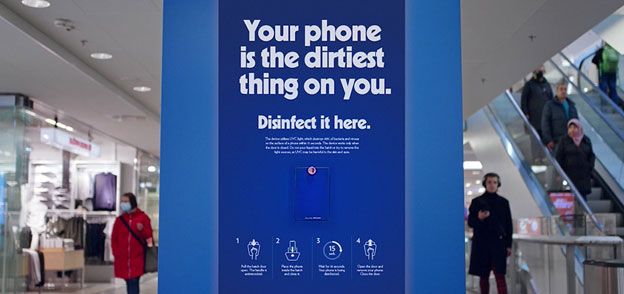
Phone disinfectant billboard: Terveystalo x TBWA (Source: Ad Age)
Solutions can also be simple and low-tech, such as the foot handles for public doors. Used outside of a public washroom, a well-placed POSM message on foot handles could work wonders in small business settings like mini-marts and convenience stores.
Customers are spared of the extra hand sanitizer use; plus it is intuitive and non-intrusive, and unlike conventional door handles customers still have to make the conscious effort to look down. This goes for other aspects of safety within retail space design. They can all be opportunities for strategic use of POSM.
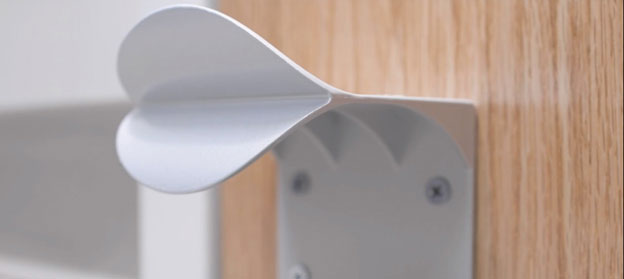
A door handle that keeps your hands clean (Source: Door-Duck)
2. Interactivity that empowers customers through ease
The idea of social distancing would remain an indelible part of shoppers’ experiences long after society moves past the pandemic.
Therein lies the opportunity to create impactful shopping experiences.
How can brands be engaging in retail settings without being intrusive?
One way to do so is to be interactive without in-person contact.
Johnson & Johnson worked with Tokinomo, a supermarket system that uses a shelf robot to promote products, set off by motion detection.
It triggers movement and audio to bring attention to a product, much to the amusement of shoppers.
[Link: https://www.youtube.com/watch?v=fDh0em4dlAo]
On paper, this raises questions. If numerous shelf robots are triggered by shoppers, or if only one is constantly and regularly prompted to life as people walk past it, that would invariably ruin trips to the supermarket?
But if say, it is used to help shoppers locate the items they’re looking for more easily by detecting the location and movement of their shopping carts, it creates opportunities for tailored, interactive experiences between brands and their customers.
A service like Amazon Go which tracks the placement and movement of every single shelf item proves that this is possible.
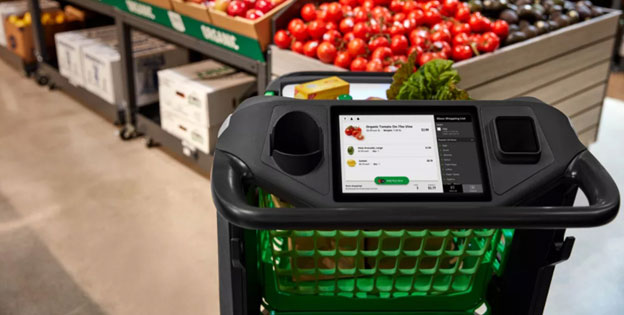
The digital dashboard on the Amazon Go shopping cart (Source: The Verge)
Imagine this – as customers key in or update their shopping list, the in-store POS setup can use digital dashboard shopping carts and motion sensing to highlight complementary products they would like, similar items other customers bought (much like online shopping), or great deals based on their shopping preferences.
This also means reducing the physical clutter within stores and lessening staff-customer encounters.
That, in turn, translates to improved safety, lower long-term costs, and more targeted below-the-line marketing communications.
3. Deliver on unique retail experiences
Another way to empower customers is to take the retail experience into the virtual world.
A simple way this is being done is via dedicated in-store apps and QR codes.
At this point, QR codes are prevalent in the Malaysian retail scene as means of contactless payment.
However, so much more can be done by brands using well-placed QR codes within stores.
For a start, customers can scan QR codes on shelves that display all the information they need about product insight without laying hands on them.
This allows for POSM messages to move from shelves onto phones, making room for all manner of creative interfacing on customers’ personal devices.
It is an open door for brands and retailers to find new ways to upsell or cross-sell customers.
Sometimes a simple QR code is all that’s needed to bring products to life. Watch how Zara uses augmented reality (AR) to showcase their products, making use of retail space without taking up the physical space of customers:
[Link: https://www.youtube.com/watch?v=l_1B4hZ6aRE]
This melding of the real world and virtual world in retail lends enormous potential to POSM.
Your POSM can be both offline and online.
How retailers execute upon it is a matter of pragmatism and imagination.
But where AR holograms may be a step too far for many retailers, a simple retail navigation map could work instead, such as the indoor mall navigation app by Sunway Pyramid that features promotions from a number of its retailers.
The growing use of such apps to support virtual queuing (or parking), in-store foot traffic, and stock checking also creates fresh opportunities for brands to have targeted conversations with their customers through strategically positioned POSM.
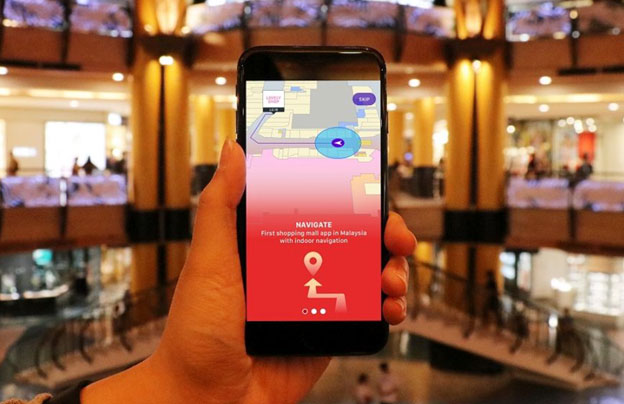
Sunway Pyramid navigation app (Source: SAYS)
What’s the future of POSM?
It is true that consumers are flocking to online shopping, but it also stands that in-store retail experiences are due to be reimagined for the future.
The present reality of retail in the midst of a global pandemic has compelled businesses to be inventive, especially with regard to POSM.
How do you sell with all our present in-store restrictions?
Some ideas remain conceptual at best, while others are ready for the market.

